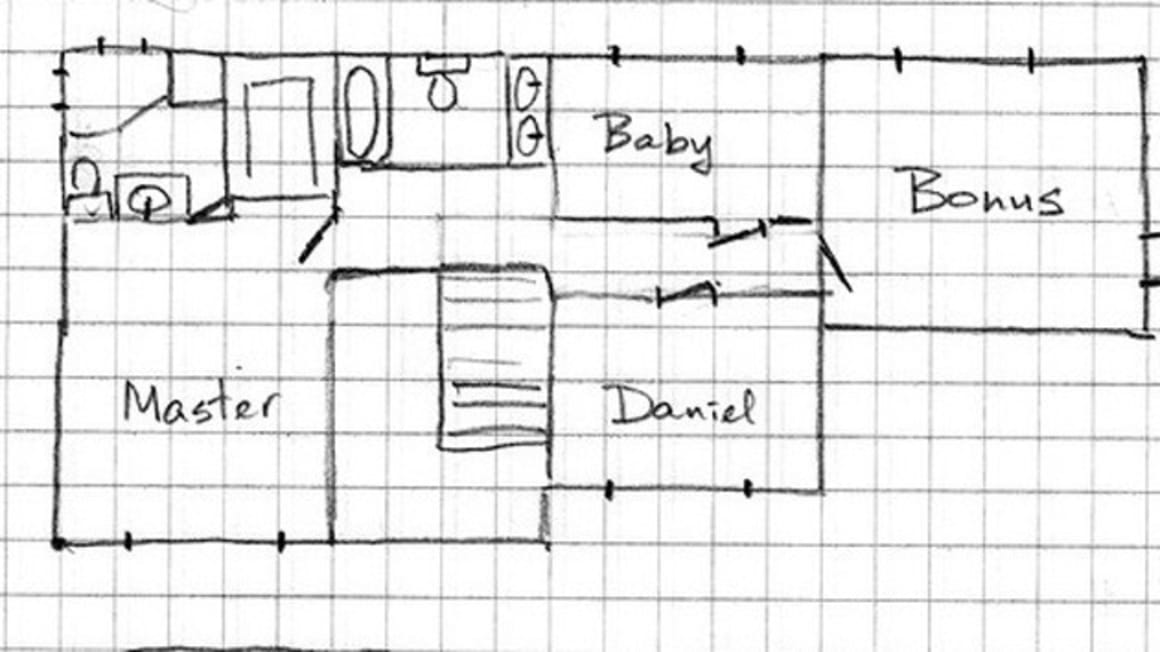It's the inside that counts! What makes a good floor plan: Sam Crothers

Houses are just like people; it’s easy to fall in love with them based on the outside, but the true measure of their worth isn’t skin deep - it’s what’s on the inside that counts! The interior layout of a home, or floor plan, is one of the most important factors when it comes to measuring a home’s success. If you’ve got a good floor plan, you’re much more likely to enjoy your home.
Architects and designers do lots of training to create beautiful, functional floor plans, but there are a few simple ideas that anyone can use.
For a floor plan to be “good”, it has to be good for you. In other words, it has to meet your individual needs and wishes. Start your house plan search with a clear idea of what you’re after, and you’re halfway there.
Ask yourself these questions:
Do you like informal, open plan living, or do you want traditional segregated spaces with higher levels of privacy? There’s been a big movement toward open plan living but that kind of layout doesn’t suit everyone.
Do you want a house with flexible rooms that can be used for different purposes if your needs change? If you’re after a “home for life”, you might want a floor plan with rooms that can be used in different ways. Some plans, for example, have a small room off the master bedroom that you can use as a nursery, study or a walk-in closet depending on your stage of life.
Do you have lots of overnight guests? If you have a lot of people staying over, you might want to consider an extra bathroom and some extra living space so guests can enjoy a bit of time to themselves. There’s nothing worse than the feeling of tripping over each other.
Do you need to work from home? If you do a lot of work at home, you might like to consider a floor plan with a study nook off the main living area. A study nook can give you privacy and space without making you feel isolated. If you have a home based business with clients or customers visiting, you might need an area that you can zone-off, so other parts of the home remain private during business hours.
Do you need a separate space for teenagers or small children? A family room off the kitchen is a good option for homes with young children and a games area that’s removed from the “adult zone” will afford some privacy for older kids.
Do you need lots of storage space? Floor plans with lots of closets and walk-in robes will make your life a lot easier, and storage in the roof will help as well.
Do you want a home with indoor-outdoor living? If you love the great outdoors, choose a plan where the main living spaces are connected to the backyard or terrace. Double doors from the living room will open up the house for entertaining and make it easy to accommodate large groups of people.
Good floor plans are also characterised by a range of general features that are nice to have in any home. These include:
A wide entry foyer. An entry space with lots of room for a hall table and drop zone is convenient and welcoming.
Natural light and ventilation. Try to look for layouts that allow for as much light and ventilation as possible. A home with natural light and airflow is generally happier and healthier.
An open kitchen. For almost everyone, the kitchen is the heart of the home and people naturally congregate there. Even if you don’t do lots of gourmet cooking, try to look for a kitchen that’s large enough for seating so other people can keep you company while you work.
Adequate room sizes. Rooms should be large enough to accommodate your preferred furniture layout, but not so large that they feel cold and uninviting.
Privacy for the bedrooms and bathrooms. Private spaces in the home should be screened off from public areas like the kitchen and lounge room, and there should be privacy between bedrooms as well. Look for homes with closets on either side of common walls to increase acoustic insulation.
Once you’ve got your individual requirements sorted out and you’ve found a floor plan that includes some of the positive general features listed above, it’s time to use a bit of intuition and make an assessment of issues like proportion and flow.
If you’re inspecting a home, where do you instinctively want to walk when you open the front door? Does the sequence of rooms feel logical? Do you have to walk around obstacles or back-track to reach certain rooms? A good layout will optimize the circulation pattern so there are no wasted steps and the “energy” flows. Similarly, good floor plans will have rooms that are well-proportioned. There are various theories in relation to proportion, but generally speaking, try to avoid long, narrow rooms and favour compact rectangular shapes instead.
Following these steps will help you find a good floor plan, but remember, houses, like people, aren’t always perfect. Sometimes a little compromise can lead you to a nurturing home that feels right, even if it doesn’t tick all the boxes.
Sam Crothers is the founder of Houseplanology.com, a home website that includes design and building resources, interviews with architects and designers, and a house plan directory.
You can contact Sam via email or on Twitter.